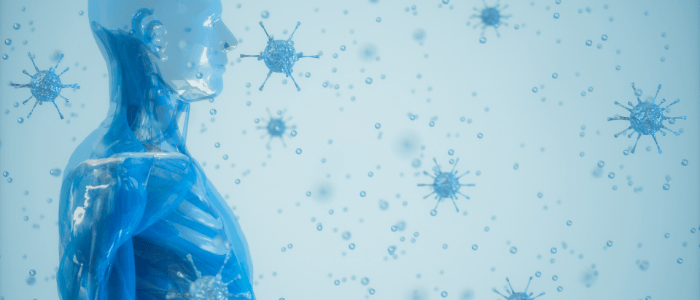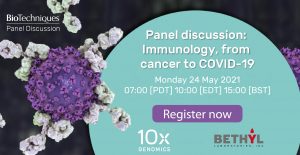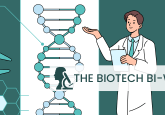How deep immune profiling can be used to improve personalized medicine in the face of a pandemic: an interview with Frank Staal

Frank Staal, an expert on the use of techniques, such as flow cytometry and mass cytometry, for deep profiling of the immune system explains how this can further understanding of a diverse range of immune reactions in humans and discusses whether this can point to better, more targeted therapeutic strategies.
 Biography
Biography
Frank Staal is full professor of Molecular Stem Cell Biology at Leiden University School of Medicine (LUMC; The Netherlands). He is co-director of the LUMC Flow Cytometry Core Facility (FCF) and holds teaching positions at Delft University of Technology and Erasmus MC, Rotterdam, The Netherlands. He was a postdoctoral Fellow of the Royal Academy of Arts and Sciences, a member of the Health Council that advises the Dutch Government (on neonatal screening) and coordinates two large EU H2020 consortia on gene therapy for immune disorders.
What actually sets deep immune profiling apart from the conventional techniques?
This involves 30, 40 color flow cytometry or mass cytometry with CyTOF. Those two techniques are very good for dissecting the immune system at a much deeper level, because when you combine all these markers, you see new subsets, more in total.
The innate system is especially well suited to be studied with flow cytometry because in mass cytometry it is more difficult to have the innate cells survive the procedure, but you can do it with CyTOF analysis. We recognized some 250 different immune subsets using EuroFlow panels. We can look at the different effector phases of several naive subsets, central memory and effector cells, and then also isotype specific. We can see the IgA, IgG1, 2, 3, 4, the IgM, IgE, all the different subsets. What is really unique is if you do this at a very deep level where you measure a large number of cells, you can even measure the plasma cells in peripheral blood.
We started generating all these techniques for other projects when COVID-19 hit. COVID-19 is, although awful on one hand and we’re all affected by it, also a unique opportunity to really understand human immunology, because it is a new antigen for everybody in contrast to just about any other infectious disease where most people already have some memory. Here you see that everybody needs to mount a new immune response from scratch. That is why we see such differences in the immune response between people. So, the deep profiling has to do with the number of parameters we can measure and the number of subsets we can recognize.
Panel discussion: Immunology, from cancer to COVID-19
Our panelists, including Frank, will discuss vaccine development, addressing unknowns in immune response and leveraging the immune system in disease treatment.
What developments in particular have been really key to novel insights in your research over the past few years?
First of all, the advent of mass cytometry where you use metal-labeled antibodies, instead of fluorochrome-labeled antibodies, has pushed the fields to look at many more markers and we realized, if you look at say, 40 markers, you see so much more. That has pushed the more traditional flow cytometry field to also start to develop more fluorochromes. Then instead of the standard flow cytometry, where you have the problem that fluorochromes overlap in their emission spectra, and you need to compensate, spectral flow cytometry is now coming along. For instance, with Cytek Aurora, Sony, and many more companies, who are also building on this.
Now, with spectral flow cytometry, which is quicker than CyTOF, you can also measure 40 parameters.
This has boosted the traditional flow cytometry field to now look at more data. We’ve also got many more tools to analyze these data, which get quicker and better.
This means that you can now immune monitor a patient. We do the immune monitoring the same day we have results that are directly feed back to the doctors, who then make a clinical decision on how to treat a patient. So, we were going to see clinical flow cytometry becoming more and more important.
So, it’s coming into the realm of precision medicine?
Exactly, this is definitely precision medicine, as it’s also personalized, and because flow cytometry is so quantitative, you can start to look at things that were very difficult before. In all those cases new flow cytometry will be the tool to monitor the patients.
How have you applied your knowledge to the COVID-19 pandemic?
One of the things that we’ve published is a very minor Case Report with some of our people from the ICU and from the obstetrics department; we had a patient, around 30 years of age, pregnant. COVID-19 gets worse during pregnancy. This woman was around 26 weeks in her pregnancy, which is very early, when she got admitted to the ICU.
At that time, the only thing our ICU doctors could do is to give her a high dose of methylprednisolone, which is just shutting down the complete immune system – innate and adaptive. This would probably save her life, but it would be detrimental for the fetus. So, we had already started immune monitoring and we saw that she was developing an adaptive immune response but much slower than we’d seen in other patients. Therefore, we held off on this high dose of corticosteroids otherwise it could severely diminish the emerging immune response.
She was given a very low dose to help her, and that didn’t affect the immune response much. Then we saw that she was starting to recover and we monitored her every three days. At a point where it was safe for her to get the cesarean section, that was carried out, and the child was delivered safely. It was clear that the clinical decision-making probably saved both the mother and the child in this case.
In infectious diseases, using immune monitoring in this way is very novel and COVID-19 has accelerated this process tremendously, which is a positive outcome for biomedical research.
Would you say that your position as a translational researcher within immunology is quite unique, would you like to see more immunologists doing translational research?
In the Netherlands, we have medical immunologists who do a lot of immunology measurements, not only flow cytometry but also serology and other things that are helping doctors with the diagnostic process, but they are sometimes a little farther removed from the latest developments. I think it’s very important to get those people to stay up-to-date and that researchers get a chance to have their own lab, but also translate the findings into the clinic.
Regarding the paper that you published about the immune perspective of the antibodies for SARS-CoV-2, what were your key conclusions about which types of antibody and vaccine will be the most effective?
What we realized quickly – although we’re not virologists but, taking the knowledge from all the great virologists into account – is that the interaction of the spike protein with ACE2, that’s really a very high affinity interaction. So, we immediately realized that one antibody was not going to be sufficient. You need a cocktail of antibodies that preferentially will be directed against both sides of this large interaction surface, what we call the ‘interaction synapse’.
Now, fortunately, most vaccines will take this full spike protein as immunogen so you can expect multiple antibodies against multiple epitopes to be there. Where you now see all these new variants coming up, it is striking that the most dangerous variants have conserved mutations. One is the 501 mutation on one side in one of the interaction synapse, the other, 484, is at the other side. So that makes it a little bit troublesome when you think about therapeutic antibodies and vaccines. I’m quite optimistic that they will still be somewhat effective because I don’t think the T-cell responses will be affected as much.
What is so fantastic with these vaccines is that, not only that they’ve been developed so quickly, but also that some of them – like the messenger-RNA vaccines – are very versatile. So, you can change them very quickly and make a cocktail of different variants that you can immunize with this cocktail.
In terms of T cell understanding, what do you think is the importance of that in effectively treating SARS-CoV-2?
T-cell responses, of course, are crucial. The best protection against these respiratory infections is the production of IgA. IgA is the antibody isotype that is on all the epithelial layers. It is also on the surface of the lungs where they are exposed to air.
Any productive immune response or any vaccination response should produce IgA. Unfortunately, that is not always measured. I have seen really good publications of these vaccines where they do not measure IgA, but they measure IgG and IgM but, in order to get IgA, you need a T-cell helper response for IgG as well. So, for the B cells to undergo class recombination and to get high-affinity responses, they need the help of T cells.
Your innate cells are also important, because they need to present antigens first of the T-cells, and then in the lymph nodes T cells will give help to the B cells, so that in the end you get the right B cells that switch to IgA.
I do not think cytotoxic T cells in a normal immune response are very critical here because cytotoxic T cells will destroy the virus-infected cells. In this case, that is not what you want, because those are your epithelial layers in your lungs. We see robust CD8 responses in some of our more severely ill patients, but they need help to get rid of the infection, but they probably will have some side effects in terms of lung damage.
I think in most healthy people where you get a productive immune response, the T cells will help the B cells and then you get IgA and then a little bit of IgG3s, and they will protect at a mucus layer and that is the proper response that you want.
What key lessons do you think that the field of immunology has learned during the COVID-19 pandemic?
There were a number of very important lessons from this pandemic. First, if you want to understand human immunology, you need to measure it in human cells, whenever you can. Immunology research has been focused on mice, which means you can discover all kinds of new things, you can do things in mice that you can never do in humans; but, there is quite a bit of difference between mice and humans.
The second thing is that when you have a pandemic, you will see things that we kind of knew, but that we didn’t fully realize for example that there is such a diversity in immune response between people and that we still understand very little about how the immune system works. How can we have elderly subjects who don’t respond well and some that recover within a week? Some fit, elderly people could deal with the infection as well as a 30 or 40 year old. What it is that makes those people different? We don’t know. We know a couple of risk factors, but how – say, how does diabetes, how do all kinds of genetic factors influence the immune system? I think that is a key area where immunology should start to look. Also, all of the information that we will gain from physicians, researchers and sequencing is going to be very important too.
Nowadays there is more and more information on cancer risk, but we know little about the immune system at the individual level. I think a key lesson is that we need to get more insights into the immune status of individuals. Hopefully, based on that, we can understand how we can improve that. Maybe with medication or with lifestyle changes.
I think that’s going to be one of the major lessons here that we’re still so ignorant about. In general, insight into the human immune system, also individual specific is an important topic. What is going on and then understanding what are the protective factors, which of course is extremely important, because prevention is a much better way to deal with healthcare than treatment.
Do you think more open databases and wider collaborations will be the way to address that?
It’s the only way to move this forward, you need to do measurements on the immune system, on cytokines, on serology and have genetic information – this is going to be a huge database that you need. Thus, you can only do this in an open setting where you automatically have lots of people from different backgrounds looking at this.
Also, if you expect that you’ll get new pandemics, then at least you can look at them and prepare for them in a more intelligent way.
The opinions expressed in this Interview are those of the author and do not necessarily reflect the views of BioTechniques or Future Science Group.






